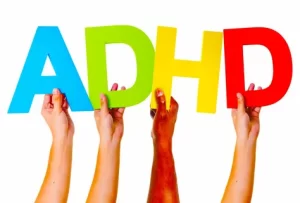
Attention Deficit Hyperactivity Disorder (ADHD) affects individuals of all ages, impairing their ability to focus, control impulses, and regulate activity levels. While ADHD is commonly associated with children, it can persist into adulthood, posing challenges in various aspects of life. Fortunately, numerous medications are available to manage ADHD symptoms, but finding the right one can be daunting. In this article, we’ll delve into the landscape of ADHD medications, comparing their efficacy, side effects, and considerations for finding the optimal treatment.
Understanding ADHD Disorder
Before exploring medication options, it’s crucial to grasp the nature of ADHD. ADHD is a neurodevelopmental disorder characterized by persistent patterns of inattention, hyperactivity, and impulsivity. These symptoms can manifest differently across individuals and can significantly impact academic, professional, and social functioning.
Stimulant Medications
Stimulant medications are the most commonly prescribed and well-researched treatment for ADHD. They work by increasing the levels of dopamine and norepinephrine in the brain, neurotransmitters associated with attention and impulse control. Two main types of stimulants are typically prescribed: methylphenidate and amphetamine-based medications.
- Methylphenidate-Based Medications: Methylphenidate-based medications, such as Ritalin and Concerta, are often the first-line treatment for ADHD. They come in various formulations, including immediate-release and extended-release versions, allowing for customized dosing based on individual needs.
- Amphetamine-Based Medications: Amphetamine-based medications, like Adderall and Vyvanse, are another class of stimulants widely used to manage ADHD symptoms. They also offer both immediate-release and extended-release options, providing flexibility in treatment.
Non-Stimulant Medications
While stimulants are effective for many individuals with ADHD, they may not be suitable for everyone due to concerns about misuse, tolerance, or side effects. In such cases, non-stimulant medications are alternative options.
- Atomoxetine (Strattera): Atomoxetine is a selective norepinephrine reuptake inhibitor (SNRI) that increases the levels of norepinephrine in the brain. It is approved for both children and adults with ADHD and may be particularly beneficial for those with coexisting anxiety disorders.
- Guanfacine (Intuniv) and Clonidine (Kapvay): Guanfacine and clonidine are alpha-2 adrenergic agonists that work by affecting certain receptors in the brain. They are often prescribed off-label for ADHD, especially when stimulants are not tolerated or are ineffective.
Comparing Efficacy and Side Effects
When choosing an ADHD medication, it’s essential to consider both efficacy and potential side effects. Stimulant medications generally have a high success rate in reducing ADHD symptoms, with many individuals experiencing significant improvements in attention, impulsivity, and hyperactivity. However, they may also cause side effects such as decreased appetite, insomnia, and irritability.
Non-stimulant medications tend to have a different side effect profile, often causing drowsiness, fatigue, or gastrointestinal issues. While they may be better tolerated by some individuals, they may take longer to produce noticeable improvements in symptoms compared to stimulants.
Individualized Treatment Approach
Finding the right ADHD medication often requires a personalized approach. Factors such as age, symptom severity, coexisting conditions, and individual response to medications should all be taken into account when making treatment decisions. Additionally, regular monitoring and adjustments may be necessary to optimize outcomes and minimize side effects.
Considerations for Children vs. Adults
Treatment considerations for ADHD may vary between children and adults. Children may require different dosing regimens and may be more susceptible to certain side effects, such as growth suppression with long-term stimulant use. Adults with ADHD may have additional concerns, such as managing comorbid conditions like depression or substance abuse.
Consulting a Healthcare Professional
Ultimately, the decision to start or change ADHD medication should be made in consultation with a qualified healthcare professional. A thorough evaluation, including a review of medical history, symptom assessment, and consideration of individual preferences, is essential for determining the most appropriate treatment approach.
Conclusion
ADHD is a complex disorder that can significantly impact daily functioning, but effective treatment options are available. Stimulant medications remain the cornerstone of ADHD treatment, offering high efficacy for many individuals. However, non-stimulant medications may be preferable for those who cannot tolerate stimulants or have specific contraindications. Finding the right medication often requires a personalized approach, taking into account individual factors and preferences. With careful consideration and guidance from a healthcare professional, individuals with ADHD can find the medication that best suits their needs, improving their quality of life and functioning.
RELATED POSTS
View all


